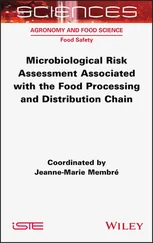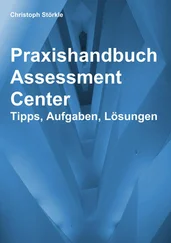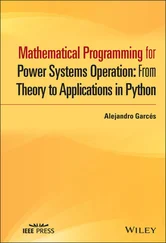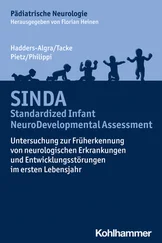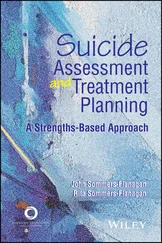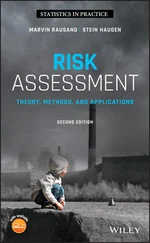Georgi Popov - Risk Assessment
Здесь есть возможность читать онлайн «Georgi Popov - Risk Assessment» — ознакомительный отрывок электронной книги совершенно бесплатно, а после прочтения отрывка купить полную версию. В некоторых случаях можно слушать аудио, скачать через торрент в формате fb2 и присутствует краткое содержание. Жанр: unrecognised, на английском языке. Описание произведения, (предисловие) а так же отзывы посетителей доступны на портале библиотеки ЛибКат.
- Название:Risk Assessment
- Автор:
- Жанр:
- Год:неизвестен
- ISBN:нет данных
- Рейтинг книги:4 / 5. Голосов: 1
-
Избранное:Добавить в избранное
- Отзывы:
-
Ваша оценка:
- 80
- 1
- 2
- 3
- 4
- 5
Risk Assessment: краткое содержание, описание и аннотация
Предлагаем к чтению аннотацию, описание, краткое содержание или предисловие (зависит от того, что написал сам автор книги «Risk Assessment»). Если вы не нашли необходимую информацию о книге — напишите в комментариях, мы постараемся отыскать её.
Explore the fundamentals of risk assessment with references to the latest standards, methodologies, and approaches Risk Assessment: A Practical Guide to Assessing Operational Risks
Risk Assessment: A Practical Guide to Assessing Operational Risks
Risk Assessment — читать онлайн ознакомительный отрывок
Ниже представлен текст книги, разбитый по страницам. Система сохранения места последней прочитанной страницы, позволяет с удобством читать онлайн бесплатно книгу «Risk Assessment», без необходимости каждый раз заново искать на чём Вы остановились. Поставьте закладку, и сможете в любой момент перейти на страницу, на которой закончили чтение.
Интервал:
Закладка:
ISO 31010 states that the risk assessment process provides decision‐makers and stakeholders a better understanding of risks that could impact an organization’s business objective, and the efficacy of controls in place, so that the organization can better manage its operational risks. In essence, the risk assessment process provides a basis for decisions to be made regarding the most appropriate risk‐control measures to achieve an acceptable risk level. Without proper risk assessment, risks remain unknown and cannot be adequately managed. The ISO standards on risk management should be an important reference for the safety professional, especially those who work in the risk management and insurance business.
2.9 ANSI/ASSP Z590.3, Prevention Through Design
The ANSI/ASSP Z590.3, Prevention through Design, Guidelines for Addressing Occupational Hazards and Risks in the Design and Redesign Processes was first published in 2011 and reaffirmed in 2016. The standard was the result of a number of years of efforts by the ASSP, National Safety Council (NSC), and National Institute of Occupational Safety and Health (NIOSH). The standard was developed to provide consistent procedures for conducting hazard analysis and risk assessment in the design and redesign process.
Risk assessment is a major component of the Prevention through Design (PtD) process as outlined in ANSI Z590.3. A significant portion of the standard is dedicated to applying risk assessment throughout the life cycle of a system. Section 7, The Hazard Analysis and Risk Assessment Process covers the following steps on risk assessment.
Communication and direction
Establish risk criteria
Establish the context
Anticipate/Identify risk sources
Consider the failure modes
Assess the severity of consequences
Determine occurrence likelihood
Analyze risk
Evaluate risk
Select and implement risk reduction and control methods
Monitor and review
The PtD standard also presents several risk assessment techniques and provides samples and templates in the appendices. ANSI Z590.3 emphasizes the use of risk assessment in workplace designs and existing systems as a major aspect of PtD. The PtD standard provides guidance on the hierarchy of controls beginning with “higher level” controls including avoidance, elimination, substitution, minimization, and simplification. These “higher level” controls are more readily applied during the conceptual phases of design and redesign of systems, and more effective in reducing risk.
ANSI Z590.3 is unique in that it is intended to be applied throughout the life cycle including pre‐operation, operational, post incident, and/or post operational stages of products, processes, and operations. Identifying hazards, assessing risks, and determining controls during the design or redesign process is the most reliable and cost‐effective time to perform these activities. Thus, this standard should be a primary reference for the safety professional.
2.10 ANSI B11.0 Machine Safety
ANSI B11.0‐2020, Safety of Machinery is considered the center piece for machine safety and risk assessments. It is one of more than 30 standards and technical reports for metal working machinery published by ANSI and B11 Standards, Inc., known as the B11 series. In the absence of machine‐specific standards, ANSI B11.0, along with ANSI B11.19‐2019, Performance Requirements for Risk Reduction Measures: Safeguarding and other Means of Reducing Risk combine to form the foundation for the B11 series of machine‐specific (Type‐C) standards, and for other industrial machinery lacking a machine‐specific safety standard. The B11 standards and technical reports are organized with the ISO A‐B‐C level structure briefly summarized below:
Type‐A standards (basis standards) provide basic concepts, principles for design, and general aspects that can be applied to machinery.
Type‐B standards (generic safety standards) address one or more safety aspects or one or more types of safeguards that can be used across a range of machinery.
Type‐C standards (machinery‐specific safety standards) address detailed safety requirements for a particular machine or group of machines.
Since it applies to an array of machines and contains general requirements, ANSI B11.0 is considered a Type‐A standard. Its applies to new, existing, modified, and rebuilt power‐driven stationary machines used to shape or form materials through cutting, impact, pressure, electrical, and other processing methods. ANSI B11.0 also states that machinery suppliers and users are responsible for defining and achieving acceptable risk and that any risks associated with the operation, maintenance, dismantling, and disposal of machinery shall be reduced to an acceptable level. The standard includes a formal method to conduct and document the risk‐assessment process, and also identifies some preparations that must be made before a risk assessment begins. The standard presents the basic risk‐assessment process in a step‐by‐step approach to assist in achieving this goal.
The ANSI B11.TR3‐2000 (R2015), Risk assessment and risk reduction – A guide to estimate, evaluate and reduce risks associated with machine tools is an ANSI Technical Report. As part of the ANSI B11 series of technical reports and standards, TR3 pertains to the design, construction, care, and use of machine tools. The report defines a method for identifying hazards associated with a particular machine or system when used as intended, and provides a procedure to estimate, evaluate, and reduce the risks of harm to individuals associated with these hazards under the various conditions of use of that machine or system. Examples of tasks and machine hazards, as well as risk‐reduction methods are included in the technical report.
In addition, ANSI has adopted ISO 12100, Safety of Machinery – General Principles for Design – Risk Assessment and Risk Reduction . This standard specifies the basic terminology, principles, and a methodology for achieving safety in the design or machinery. It specifies principles of risk assessment and risk reduction to help designers in achieving this objective. While this is an international standard, it is an ISO standard that safety professionals in the United States should be aware of even if they do not have international responsibilities or involvement.
2.11 NFPA 70E
With 2015 and 2018 editions of NFPA 70E, a major shift occurred in how stakeholders evaluate electrical risk. The National Fire Protection Association’s 2018 NFPA 70E: Standard for Electrical Safety in the Workplace, the latest edition of the voluntary consensus standard, addresses workplace electrical safety and includes guidance for performing risk assessments of arc flash, shock, and electrical hazards exposures.
The 2018 edition carries over several significant changes over previous editions. Where an arc flash, shock, or electrical “hazard analysis” was required before, now a “risk assessment” is required. Further, the standard has expanded the “risk assessment procedure” to include the requirement of hazard identification, assessment of risks, and the implementation of risk controls according to hierarchy of risk control methods specified in ANSI/ASSP Z10.0. The addition of the Informative Annex F, Risk Assessment Procedure, provides information regarding the process steps, risk estimation, risk reduction, and risk evaluation in alignment with ANSI/ASSP/ISO 31000. This shift from “hazard analysis” to “risk assessment” reflects a change in awareness about the potential for failure, moving from a hazard‐based to a risk‐based focus. In support of this shift, new definitions for hazard , hazardous , risk, and risk assessment are now included.
Читать дальшеИнтервал:
Закладка:
Похожие книги на «Risk Assessment»
Представляем Вашему вниманию похожие книги на «Risk Assessment» списком для выбора. Мы отобрали схожую по названию и смыслу литературу в надежде предоставить читателям больше вариантов отыскать новые, интересные, ещё непрочитанные произведения.
Обсуждение, отзывы о книге «Risk Assessment» и просто собственные мнения читателей. Оставьте ваши комментарии, напишите, что Вы думаете о произведении, его смысле или главных героях. Укажите что конкретно понравилось, а что нет, и почему Вы так считаете.



